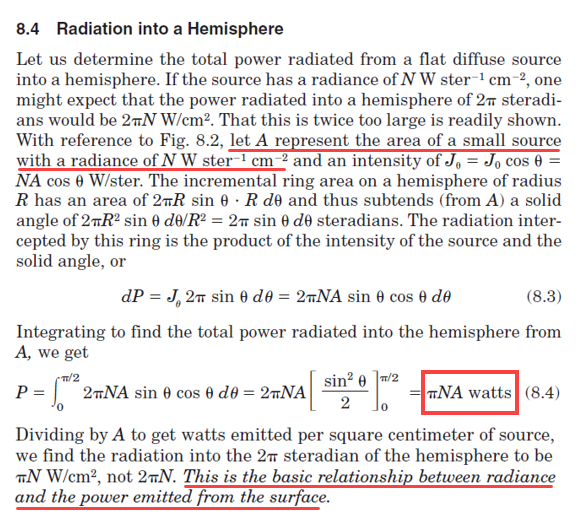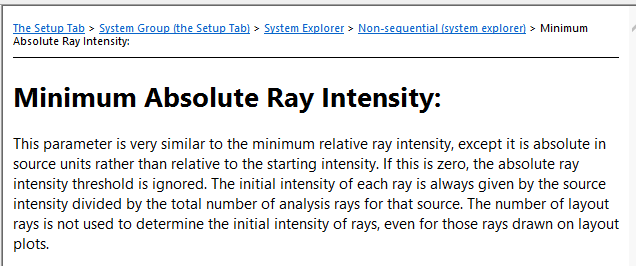I could use a little radiometry help here. Night sky luminance can be quantified in terms of visual magnitude/arcsecond². Pristinely dark skies with no light pollution or airborne dust are in the range of 22.0 mag/arcsec² (~172 μcd/m²). The Milky Way in a clear moonless sky has a luminance of around 19.6 mag/arcsec² (~1561 μcd/m²). Light-polluted skies can have a luminance of 18 mag/arcsec² (~6814 µcd/m²) or worse. The formula to convert mag/arcsec² to µcd/m² is
value in µcd/m² = (1.08E+11) × 10 ^ [-0.4*(value in mag/arcsec²) ]
1 cd = 1/683 watt/ster at 555nm. In non-sequential mode, how would one model a patch of the night sky based on its mag/arcsec²? I’m assuming one would use a Source Ellipse of some diameter at a negative distance from an optical aperture to define the solid angle, and with the Cosine Exponent set to 1.0 to give a Lambertian luminance pattern. Say I set the number of analysis rays to 1E7. What formula gives me the power in watts for a given number of analysis rays to correctly simulate a given sky luminance in mag/arcsec²?






